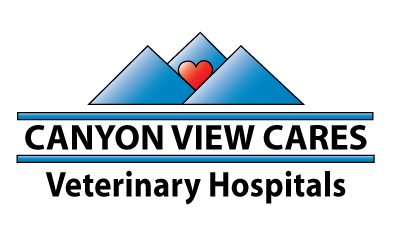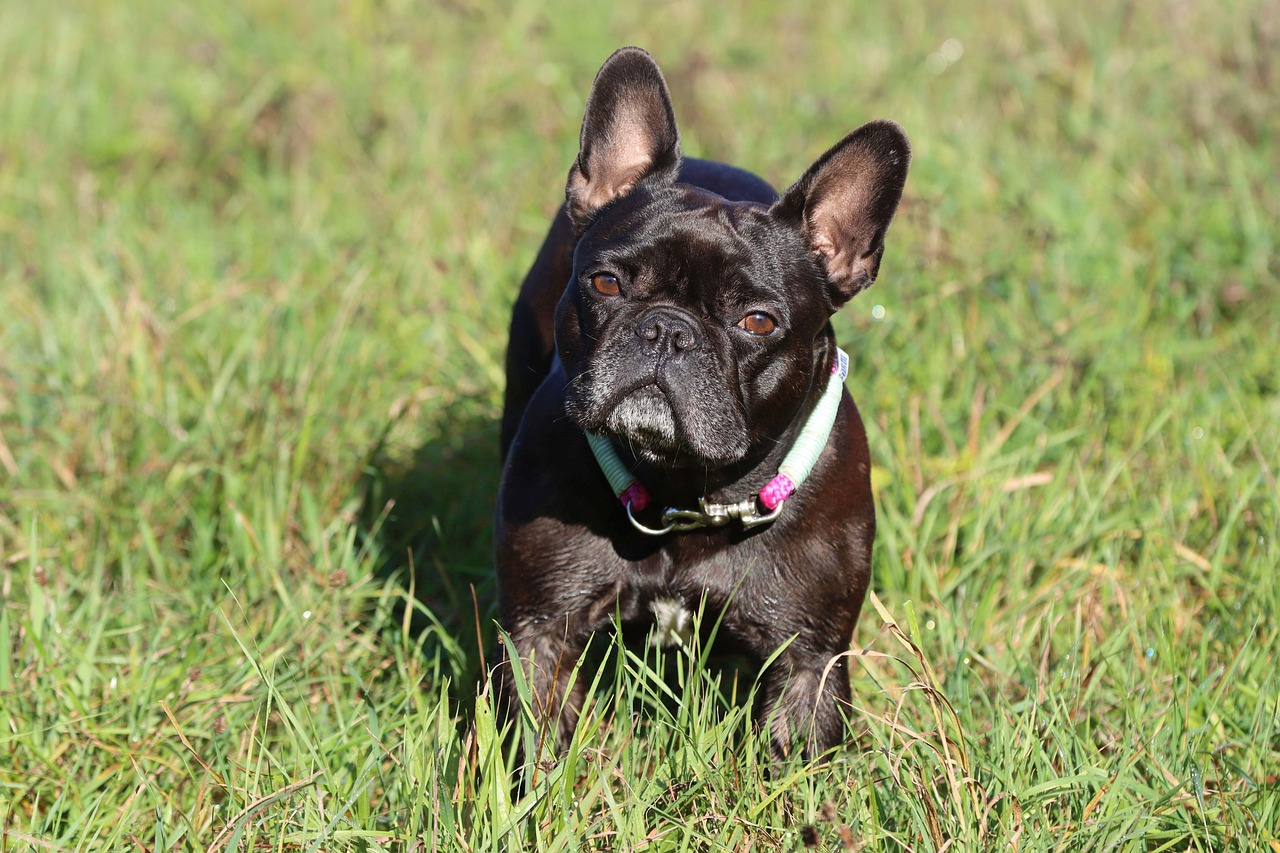What to Feed a Dog with Diarrhea: A Guide from Canyon View Cares Veterinary Hospital
At Canyon View Cares Veterinary Hospital, we know how upsetting it can be when your dog isn’t feeling well, especially when it comes to digestive issues like diarrhea. Whether it’s a sudden bout or part of a more chronic issue, it can leave you feeling worried, overwhelmed, and unsure of what to do next.
One of the most common calls we receive from pet parents is:
“What should I feed my dog when they have diarrhea?”
We’re here to guide you through that answer with the care, clarity, and community-centered approach Canyon View is known for. This guide will walk you through why diarrhea happens, what you can safely feed your dog, how to help them recover at home, and when it’s time to seek veterinary support.
Why Dogs Get Diarrhea: Understanding the Causes
Diarrhea in dogs can happen for many different reasons, some simple, some more serious. At Canyon View, we take time to consider the whole picture of your pet’s health.
Some of the most common causes we see include:
- Dietary indiscretion – eating things they shouldn’t like trash, human food, compost, or spoiled treats
- Abrupt changes in diet – switching food too quickly without a slow transition
- Stress or anxiety – boarding, travel, loud events, or changes in the home can lead to stress colitis
- Parasites – such as giardia, hookworms, or coccidia
- Viral or bacterial infections – including parvovirus, distemper, or salmonella
- Food intolerances or allergies – can develop at any age
- Side effects from medication – especially antibiotics or pain relievers
- Chronic disease – like IBD, pancreatitis, EPI, Addison’s disease, or endocrine disorders
- Foreign body ingestion or toxin exposure – including bones, toys, plants, or chemicals
Mild cases can often be managed with careful at-home care, but diarrhea that persists or worsens is always worth checking in with us about.
Step 1: Should I Withhold Food?
If your dog is bright, alert, drinking water, and doesn’t have other symptoms, briefly withholding food for 12 hours may help rest the digestive tract. This can be beneficial after a one-time incident like raiding the trash.
However, not all dogs should fast, including:
- Puppies under 6 months
- Small breeds prone to hypoglycemia
- Senior dogs
- Dogs with chronic health issues, especially those on medications like insulin
If you're unsure whether fasting is appropriate, give us a call. We’ll help you make a decision tailored to your pet’s age, breed, and medical background.
Water is essential. Always keep clean, fresh water available. Hydration is the most important factor in any case of diarrhea.
Step 2: Offer a Bland, Easy-to-Digest Diet
After the initial rest period, or if fasting is not appropriate, the next step is feeding a bland diet that supports healing and avoids irritating the gut further.
Goals of a bland diet:
- Calm the GI tract
- Improve stool consistency
- Provide gentle nourishment
- Support hydration and gut health
Here are options we commonly recommend at Canyon View Cares:
-
Boiled Chicken and White Rice
- Use boneless, skinless chicken breast or thighs, boiled and shredded
- Cook plain white rice (not brown) and mix in a 1:2 ratio with chicken
- Serve warm, in small portions, with no seasoning or oil
-
Ground Turkey and Rice
- Lean, unseasoned ground turkey is a good alternative to chicken
- Be sure to fully cook and drain excess fat
-
Extra-Lean Ground Beef and Rice
- Choose 90% lean or leaner beef
- Drain thoroughly to avoid excess fat which can worsen diarrhea
-
Prescription Gastrointestinal Diets
For more complex or persistent cases, we may recommend prescription foods formulated for sensitive stomachs:
- Hill’s i/d® Digestive Care
- Royal Canin Gastrointestinal Low Fat®
- Purina Pro Plan Veterinary Diets EN®
These diets are specially designed to be highly digestible, palatable, and supportive of the GI tract’s healing process. We carry these in our hospital and can help you choose the right one for your dog’s needs.
- Feed 4–6 small meals per day
- Start with 1 tablespoon of food per 10 lbs of body weight per meal
- Gradually increase the portion as long as symptoms don’t return
- Days 1–2: 75% bland diet, 25% regular food
- Days 3–4: 50/50 blend
- Days 5–6: 25% bland diet, 75% regular food
- Day 7: Full return to their regular diet (if stool remains firm)
- Dry or sticky gums
- Lethargy or weakness
- Reduced urination
- Skin “tenting” (when pinched skin doesn’t snap back)
- FortiFlora® by Purina
- Proviable® DC or KP
- Visbiome Vet®
- Fatty or fried foods
- Dairy products (most dogs are lactose-intolerant during GI upset)
- Seasoned or spiced human foods
- Table scraps or treats with additives
- High-fiber foods like pumpkin in early stages (this may be added later once stools are improving)
- Diarrhea lasting longer than 24–48 hours
- Vomiting along with diarrhea
- Blood in the stool (bright red or dark tarry appearance)
- Loss of appetite
- Refusal to drink water
- Signs of dehydration or collapse
- Any symptoms in a dog with a chronic condition
- Food allergies or intolerances
- Inflammatory Bowel Disease (IBD)
- Pancreatic enzyme deficiency (EPI)
- Chronic pancreatitis
- Addison’s disease
- Liver or kidney disease
- Obstructions or foreign bodies
- Mild diarrhea can often be managed at home with a bland diet and careful monitoring.
- Persistent or severe diarrhea deserves veterinary attention to prevent complications and uncover the underlying cause.
- You’re never alone – our team is always just a phone call away.
Step 3: Feeding Amounts and Schedule
When reintroducing food, smaller meals spread throughout the day are best:
Once your dog’s stool begins to normalize, begin a slow transition back to their regular food over 5–7 days:
This gentle reintroduction reduces the risk of another flare-up.
Step 4: Hydration Support
Diarrhea can cause significant fluid loss, especially in puppies, small breeds, and senior pets. Dehydration is one of the most important risks to monitor.
Signs of dehydration to watch for:
If you notice these signs, please contact us. We can provide safe rehydration options, including subcutaneous fluids in-clinic or IV fluid therapy for more severe cases.
Step 5: Probiotics and Gut Recovery
After or during a bout of diarrhea, your dog’s gut microbiome may be out of balance. We often recommend adding a veterinary-formulated probiotic to help speed recovery and support digestive health.
Some of our trusted options include:
These are available through Canyon View Cares and can be a great addition to your recovery plan. We’ll guide you on when and how to use them safely and effectively.
Foods to Avoid While Recovering
During recovery, avoid foods that could aggravate the GI tract, including:
Stick to plain, mild ingredients until your dog is fully back to normal.
When to Call Canyon View Cares Veterinary Hospital
While some cases can resolve with dietary management, others require medical attention.
Please don’t hesitate to call us if your dog is experiencing:
At Canyon View, we offer a range of diagnostics, including fecal exams, bloodwork, abdominal imaging, and dietary consultations, to get to the root of the issue. Our team is here to help you navigate next steps with compassion and clarity.
Managing Recurring or Chronic Diarrhea
If your dog experiences frequent digestive issues, there may be a long-term cause worth exploring. Chronic diarrhea may stem from:
We work closely with you to develop a long-term treatment plan that could include dietary adjustments, GI panels, medications, supplements, and regular follow-ups to keep your dog stable and comfortable.
Final Thoughts from the Canyon View Cares Team
At Canyon View Cares Veterinary Hospital, we believe that every pet deserves thoughtful, high-quality care and every pet parent deserves answers and support. We’re here to help you through every step of your dog’s digestive upset, from diet changes to diagnostics.
Remember:
If you’re ever unsure, please reach out to Canyon View Cares. We’re committed to helping your dog feel better – one belly at a time.

